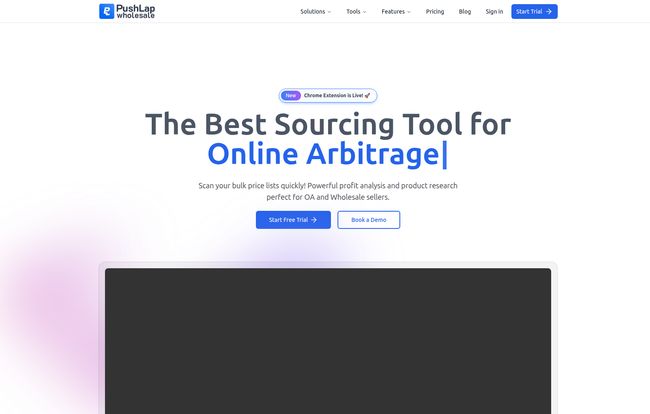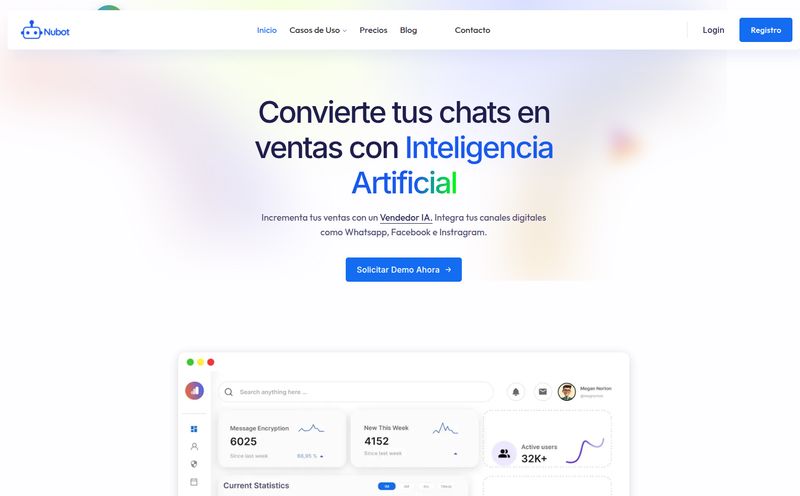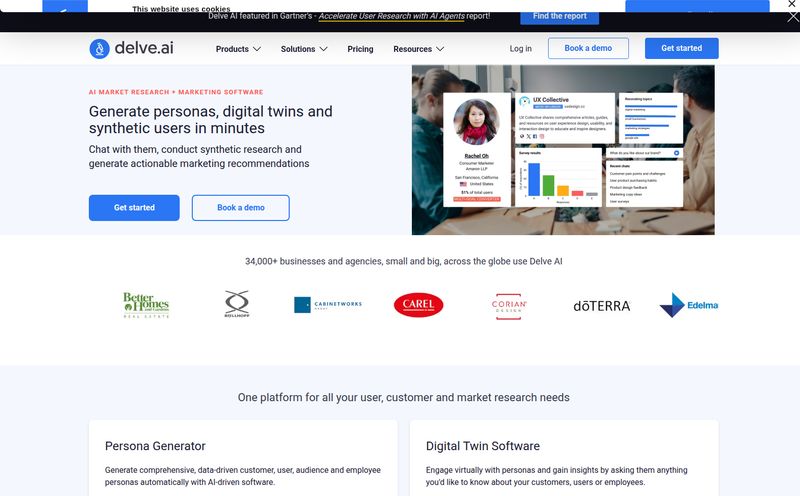If you're in the Amazon wholesale game, you know the grind. I’m talking about those late nights, fueled by stale coffee, with eyes glazed over staring at a distributor's price list. A spreadsheet with 10,000 rows of product names, UPCs, and prices that might as well be written in another language. You spend hours, maybe even days, just trying to find one or two golden nuggets.
It's like panning for gold in a river of mud. You know there's profit in there somewhere, but the sheer volume of... well, junk... is enough to make you question your life choices. I've been there. I once spent an entire weekend cross-referencing a single price list, only to find my top three potential products were either restricted, had Amazon camped on the listing, or the profit margin was thinner than my patience.
So when a tool comes along promising to automate this whole mess with AI, my ears perk up. But I'm also skeptical. We've all seen tools that promise the world and deliver a pamphlet. Today, I'm taking a hard look at Push Lap Wholesale, a platform that claims it can cut your product research from weeks to hours. Let's see if it's the real deal or just another shiny object.

Visit Push Lap Wholesale
What Exactly Is Push Lap Wholesale?
At its core, Push Lap Wholesale is an AI-powered sourcing assistant for Amazon sellers. The main draw is its ability to take those monstrous price lists from your distributors and scan them against the Amazon catalog automatically. It doesn't just match UPCs; it uses an AI algorithm to find profitable products, calculate your potential ROI, and show you all the critical data in one clean interface.
They claim a 97% accuracy rate on UPC price list scans, which is a pretty bold statement. If true, that alone could be a game-changer. It’s designed to take the manual labor, the guesswork, and the human error out of the most time-consuming part of the wholesale model.
The Core Features That Actually Matter
Fancy dashboards are nice, but what can this thing actually do for your business? I poked around, and here's what stood out to me.
The Magic of Bulk Analysis
This is the main event. You upload a distributor's spreadsheet (CSV, XLSX), map the columns like 'UPC', 'Cost', 'Product Name', and let the AI do its thing. It crunches the numbers, matches products to Amazon listings, and spits out a report showing potential profit, ROI, sales rank, and more. This isn't just a simple VLOOKUP. It's pulling in live Amazon data to give you a real-time snapshot.
Instead of you manually checking each product on Amazon, then plugging it into a profit calculator, then checking the Keepa chart... it’s all done for you. The time savings here are, frankly, enormous.
A Huge Database of Distributors
Getting approved with good distributors is half the battle. Push Lap gives its users access to a database of over 4,000 distributors. Now, let’s be clear: access doesn't mean automatic approval. You still have to do the work of opening accounts. But having a curated list to start from? That’s a massive shortcut, especially for newer sellers who don’t know where to begin. It even comes with a free brand ungate list, which is a fantastic little bonus for getting into those profitable, restricted categories.
All Your Data in One Place
I’m a big fan of efficiency. Toggling between ten different browser tabs to analyze one product drives me crazy. Push Lap integrates a lot of the essential data points directly into its dashboard. You get:
- FBA & FBM Profit Calculator: It's built right in, so you can immediately see your net profit and ROI after fees.
- Integrated Keepa Charts: You don't have to leave the platform to see a product's price and sales rank history. This is non-negotiable for serious product research.
- Competition Data: See how many other FBA sellers are on a listing and check if Amazon is a direct competitor. A lifesaver.
Being able to see all this at a glance lets you make decisions fast. Speed is everything in this business.
Let's Talk Money: Push Lap Wholesale Pricing
Alright, so how much does this magic cost? The pricing structure is based on tiers and a "token" system, which is pretty common for this type of software. Essentially, 1 token = 1 product scan or lookup.
| Plan | Price | Key Features |
|---|---|---|
| Free Trial | $0 for 7 days | 500 tokens, limited product search, access to 5 distributors. A good way to test the waters. |
| Standard | $39/month (with annual discount) | 10,000 tokens/mo, full bulk scan and product search, access to 500 distributors. |
| Business | $75/month (with annual discount) | 50,000 tokens/mo, access to all 4,000+ distributors, multi-user access (WIP), cheaper extra tokens. |
Note: Prices reflect the yearly discount mentioned on their site. Monthly is a bit more. Always check the official Push Lap pricing page for the most current numbers.
My take? The Standard plan is the sweet spot for most solo sellers or small operations. 10,000 tokens is a decent amount for scanning several lists a month. The Business plan makes sense once you're scaling up, have a team (the multi-user feature is key), and are burning through large lists from multiple distributors regularly.
The Good, The Bad, and The AI
No tool is perfect. Let's get down to the nitty-gritty. After spending some time with it, here's my honest breakdown.
What I Really Like
The time savings are undeniable. Automating the bulk scan is the single biggest advantage. What used to take me a full weekend can now be done in an afternoon, with most of that time being me getting a coffee while the AI works. The accuracy of the AI matching is impressive, and having the profit calculator and Keepa data integrated is just smart design. The free brand ungate list is a genuinely useful freebie that many other services would charge for.
Some Things to Keep in Mind
The token system can be a double-edged sword. It's great that you only pay for what you use, but you need to be mindful of how you're burning through them. If you're scanning massive, low-quality lists all the time, you might run up your costs. Also, some features, like the multi-user account on the Business plan, are listed as a work in progress (WIP). That's not a dealbreaker, but its something to be aware of if you need that feature today.
So, Is Push Lap Wholesale Worth It?
Here’s the bottom line. If you're a new Amazon seller just dipping your toes into wholesale with one or two small suppliers, you can probably get by manually for a little while. Enjoy the grind while it lasts.
But if you are serious about scaling your Amazon wholesale business, a tool like Push Lap Wholesale stops being a luxury and becomes a necessity. The amount of time and manual effort it saves is its biggest selling point. It transforms sourcing from a gut-feel guessing game into a data-driven process.
It's not a magic button that prints money. You still need to find good suppliers, build relationships, and make smart buying decisions. But it clears away all the tedious, time-sucking underbrush so you can focus on the tasks that actually grow your business. For me, that's a trade I'd make any day of the week.
Frequently Asked Questions
- What is a 'token' in Push Lap Wholesale?
- Think of a token as a single unit of work. One token is used for every product row you scan in a bulk file or for every single product you look up using their search tool. The plans come with a monthly allotment of tokens.
- Is Push Lap Wholesale good for beginners?
- Yes, it can be. While the tool is powerful, it simplifies a very complex process. The free trial is a perfect way for a beginner to understand the workflow of wholesale sourcing. The distributor database alone can save a new seller months of research.
- Can I cancel my subscription at any time?
- Based on standard SaaS practices, you can typically cancel your subscription, which would stop the next billing cycle. It's always best to check their specific terms of service, but this is a standard feature of most online tools.
- Does it work for both FBA and FBM?
- Yes. The integrated profit calculator allows you to switch between Fulfillment by Amazon (FBA) and Fulfillment by Merchant (FBM) to see the different fee structures and potential profits for each method.
- How accurate is the AI product matching?
- Push Lap Wholesale claims a 97% accuracy rate for scanning UPC-based price lists. While no system is 100% perfect, this is a very high rate and means the vast majority of your time will be spent analyzing good matches rather than correcting bad ones.
My Final Thoughts
Look, the Amazon marketplace isn't getting any less competitive. The sellers who succeed are the ones who work smarter, not just harder. Tools that leverage automation and AI like Push Lap Wholesale are the new frontier of efficient selling. It takes the most painful part of the wholesale model and turns it into a streamlined, data-rich process.
If you're still on the fence, just give the 7-day free trial a shot. Upload one of those distributor lists you've been dreading, and see what it kicks back. The results will probably speak for themselves. You have nothing to lose but a few hundred hours of spreadsheet-induced misery.



